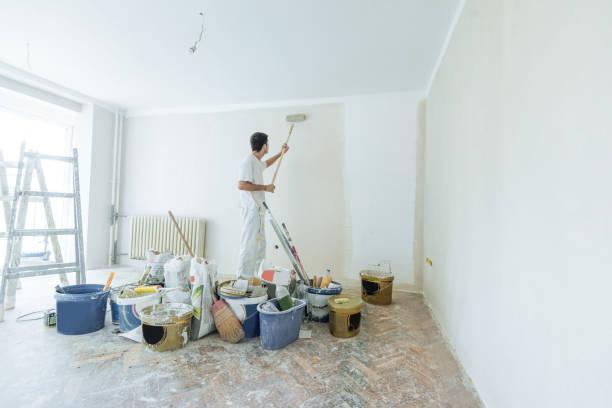Exterior Painting: How to Choose the Right Colors for Your House

Choosing the right color for your home’s exterior is one of the most impactful decisions you can make as a homeowner. Not only does it enhance curb appeal, but it also reflects your personality, sets the tone for your property, and can even influence resale value. While exterior painting might seem like a straightforward task, selecting the perfect palette involves a thoughtful balance of style, neighborhood context, architectural elements, and long-term satisfaction.
In this article, we’ll explore the key factors to consider when selecting exterior paint colors, provide tips on color coordination, and share expert insight on how to achieve a polished, professional finish. With years of experience in both residential and commercial painting, companies like Top Cut Painting, LLC have helped countless homeowners navigate color choices with confidence, turning ordinary facades into standout statements of style.
Understand Your Home’s Architectural Style
Every home has a unique architectural identity that can guide your exterior painting decisions. Whether your house is Colonial, Victorian, Mid-Century Modern, Craftsman, or Contemporary, its structure naturally lends itself to certain colors and combinations.
-
Colonial homes often look best with classic, symmetrical color palettes like white with black shutters or navy blue with cream trim.
-
Victorian homes allow for creativity and bold contrasts—deep greens, burgundies, and golds can highlight ornate features.
-
Craftsman styles suit earthy tones such as olive green, warm brown, and muted orange.
-
Modern or minimalist homes often embrace monochromatic schemes or cool neutrals with a pop of color on the front door.
Choosing colors that complement the architectural features adds harmony and visual interest while honoring your home’s character.
Consider the Surrounding Environment
Your landscape, neighborhood, and even local climate should all influence your color choices. Homes nestled in wooded areas often benefit from earthy hues that blend with nature, such as forest green or warm taupe. Coastal homes may look best with lighter shades like soft blue, sandy beige, or crisp white to reflect sunlight and complement the ocean surroundings.
Additionally, take cues from neighboring houses to maintain visual cohesion—while your home should reflect your style, drastically clashing colors can reduce neighborhood appeal and even affect property values.
Use the Rule of Three
One of the most effective color strategies in exterior painting is the “Rule of Three”: a base color, a trim color, and an accent color.
-
Base color: The dominant color of your home’s body.
-
Trim color: Used for windows, fascia, eaves, and borders.
-
Accent color: Applied to doors, shutters, or other architectural features.
For example, a light gray base with white trim and a bold red front door offers balance and character without being overwhelming. The key is to select tones that harmonize, either through similar undertones or complementary contrast.
Factor in Sunlight and Direction
Sunlight can significantly impact how colors appear once applied. South-facing homes get more direct sunlight and can wash out lighter colors, while north-facing homes may benefit from brighter tones to compensate for lower light. It’s a smart move to test paint samples on different sides of your house and observe them at various times of day before committing.
Professional painters often use larger sample boards or apply small sections directly to your home’s siding to provide a better visual representation of how the colors will look in real life.
Take Material and Surface Texture into Account
Paint behaves differently depending on the surface material. Stucco, wood, brick, and vinyl all absorb and reflect color uniquely. Additionally, textured surfaces may cast shadows or distort how the final color appears. Light colors tend to highlight imperfections, while darker hues can create a smoother appearance.
High-quality exterior painting professionals understand how different paints interact with various surfaces and can recommend products designed to last longer and resist weather damage.
Trends vs. Timelessness
While it’s tempting to choose trendy paint colors, it’s often safer to lean toward timeless palettes—especially for long-term satisfaction or if you plan to sell your home in the future. That said, you can still add modern flair with small doses of trending shades in accent features like doors or shutters.
Some timeless color combinations include:
-
White with black trim
-
Beige with brown accents
-
Gray with white trim
-
Navy with cream or light gray
If you love bold or unconventional hues, consider using them in ways that are easy to update later without needing a full repaint.
Durability and Maintenance Considerations
Certain paint colors require more upkeep than others. Dark shades tend to show dust and surface wear more quickly, while white and light colors can reveal mildew or dirt stains over time. Mid-tone hues like greige, taupe, or muted greens and blues often strike a good balance between aesthetics and low maintenance.
Choosing the right type of paint is also crucial. Premium exterior paints are more resistant to UV rays, moisture, and temperature fluctuations. Partnering with experienced painters ensures proper product selection and application, contributing to longer-lasting results and fewer touch-ups over the years.
Consult a Color Expert
Color consultants or experienced exterior painting contractors can offer personalized advice based on your home, goals, and surroundings. Many professionals provide digital renderings or sample books to help you visualize how different combinations will look before making a final decision.
Working with experts like Top Cut Painting, LLC can remove the guesswork, providing not only color insight but also the technical skills to bring your vision to life with precision and care.
Conclusion
Choosing the right color for your home’s exterior painting project involves more than just picking a favorite shade. It’s a strategic decision that blends architecture, environment, lifestyle, and personal taste. From understanding sunlight exposure to balancing trends with timeless elegance, the right color palette can dramatically enhance curb appeal and overall home value.
Investing in professional guidance ensures that your vision becomes a lasting reality. Experienced painters like Top Cut Painting, LLC not only offer exceptional technical skill but also provide valuable insights into color coordination, surface preparation, and long-term durability. With the right approach, your exterior paint job will not only reflect your style—but also protect and elevate your home for years to come.
Frequently Asked Questions
What is the best time of year for exterior painting?
Spring and fall are typically ideal, thanks to moderate temperatures and low humidity. Avoid painting in extreme heat, cold, or rainy conditions, as it can affect paint adhesion and drying time.
How many colors should I use on my home’s exterior?
Most homes benefit from a palette of three: base, trim, and accent. Some styles, like Victorian homes, may use four or more for ornate detailing.
Do darker colors fade faster than lighter ones?
Yes, darker colors are more prone to fading due to increased UV absorption. High-quality paints with UV-resistant formulas can help mitigate this issue.
Should I match my exterior with my interior color scheme?
While it’s not necessary, creating a flow between exterior and interior palettes can enhance the overall harmony of your home’s design.







